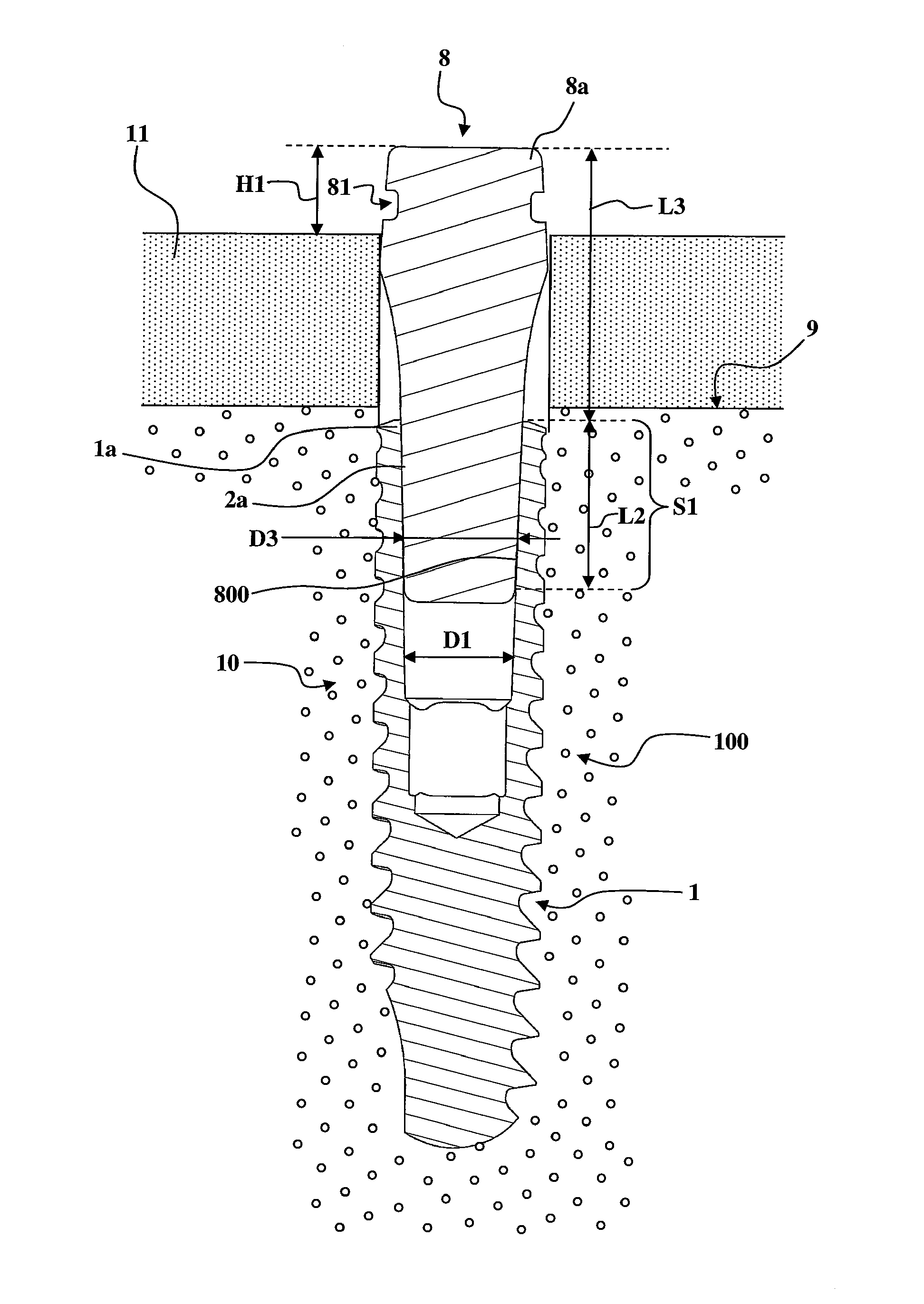Conically tapered dental implant
a dental implant and implant technology, applied in dentistry, dental surgery, medical science, etc., can solve the problems of inability to properly protect food, inability to fit a provisional protective tooth (made of plastic, for example) on the adjacent teeth by metal clips, and space arises
- Summary
- Abstract
- Description
- Claims
- Application Information
AI Technical Summary
Benefits of technology
Problems solved by technology
Method used
Image
Examples
example
[0084]A dental implant 1 according to the invention was produced with the following parameters:
L=14 mm
D=2.8 mm
[0085]α=β3=30
L1=4.6 mm
L3=4 mm
[0086]material: T60 (unalloyed titanium)
[0087]Three examples of this dental implant 1, each equipped with a final abutment 3, were subjected to repeated cycles of application of a dynamic force of 265 N according to ISO 14801. These dental implants 1 did not break until after more than 2 700 000 cycles. Excellent results were also obtained with alloyed titanium, for example TA6V.
[0088]The same cycles were applied, under the same conditions, to examples of an “OsseoSpeed® 3.0 S” implant, which is sold by the company ASTRA TECH FRANCE, is made of titanium T60 and has a maximum external diameter of 3 mm. The connection between the final abutment and the dental implant is ensured by a screwed connection. The screwed connection was broken after approximately 225 cycles.
[0089]Different kinds of final abutments can be used, as are illustrated in FIGS. 4...
PUM
 Login to View More
Login to View More Abstract
Description
Claims
Application Information
 Login to View More
Login to View More - R&D
- Intellectual Property
- Life Sciences
- Materials
- Tech Scout
- Unparalleled Data Quality
- Higher Quality Content
- 60% Fewer Hallucinations
Browse by: Latest US Patents, China's latest patents, Technical Efficacy Thesaurus, Application Domain, Technology Topic, Popular Technical Reports.
© 2025 PatSnap. All rights reserved.Legal|Privacy policy|Modern Slavery Act Transparency Statement|Sitemap|About US| Contact US: help@patsnap.com



